- News
- Reviews
- Bikes
- Accessories
- Accessories - misc
- Computer mounts
- Bags
- Bar ends
- Bike bags & cases
- Bottle cages
- Bottles
- Cameras
- Car racks
- Child seats
- Computers
- Glasses
- GPS units
- Helmets
- Lights - front
- Lights - rear
- Lights - sets
- Locks
- Mirrors
- Mudguards
- Racks
- Pumps & CO2 inflators
- Puncture kits
- Reflectives
- Smart watches
- Stands and racks
- Trailers
- Clothing
- Components
- Bar tape & grips
- Bottom brackets
- Brake & gear cables
- Brake & STI levers
- Brake pads & spares
- Brakes
- Cassettes & freewheels
- Chains
- Chainsets & chainrings
- Derailleurs - front
- Derailleurs - rear
- Forks
- Gear levers & shifters
- Groupsets
- Handlebars & extensions
- Headsets
- Hubs
- Inner tubes
- Pedals
- Quick releases & skewers
- Saddles
- Seatposts
- Stems
- Wheels
- Tyres
- Health, fitness and nutrition
- Tools and workshop
- Miscellaneous
- Tubeless valves
- Buyers Guides
- Features
- Forum
- Recommends
- Podcast
BUYER'S GUIDE
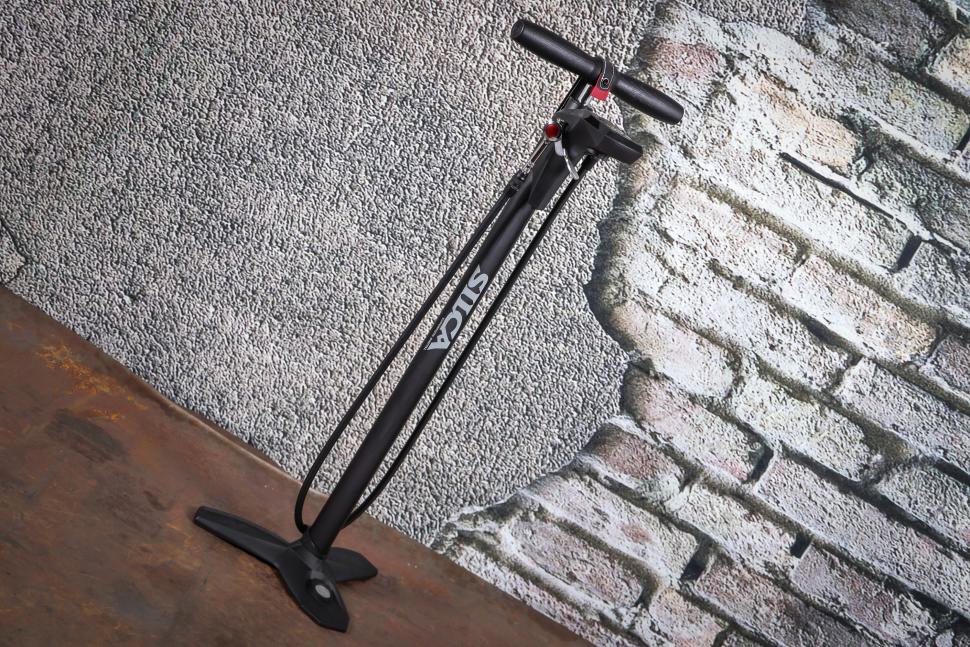 Silca Superpista digital Floor Pump-1.jpg
Silca Superpista digital Floor Pump-1.jpgBest track pumps 2023 — the easiest way to put some air in your tyres
A track pump, also called a floor pump, is designed to inflate your tyres quickly and easily. A small, lightweight pump is great for carrying when you ride, but a track pump is the best tool for the job when you're at home. We've inflated hundreds of tyres over the years to find out which track pumps do the job best. These are the best track pumps you can buy.
- Best overall: Topeak Joe Blow Sport III — Buy Now for £33.74 from Amazon | Find out more
- Best for multiple tyre sizes: Topeak JoeBlow Tubi 2Stage — Buy Now for ~£93 from Bike-Discount | Find out more
- Best for workshop football: SKS Rennkommpressor — Buy Now for £49.50 from Merlin Cycles | Find out more
- Best on a budget: Lifeline Essential — Buy Now for £9.99 from Wiggle | Find out more
- Best standalone for tubeless: Beto CJA-001S Tubeless Air Tank Inflator — Buy Now for £49.99 from Merlin Cycles | Find out more
- Best all-in-one for tubeless: Topeak Joe Blow Booster — Buy Now for £133.00 from Tweeks Cycles | Find out more
- Best portable: Cannondale Airport Carry On — Buy Now for £44.99 from Triton Cycles | Find out more
- Best "Ooh, shiny!": Birzman Maha Push and Twist II — Buy Now for £72.08 from Amazon | Find out more
- Best money-no-object: Silca Superpista Digital — Buy Now for £290 from Chain Reaction Cycles | Find out more
- Almost as good as Joe Blow Sport, but slightly cheaper: Zefal Profil Max FP60 — Buy Now for £29.99 from Merlin Cycles | Find out more
A track pump makes it easy to keep your tyres at the right pressure, keeping them performing at their best. They start at just £10, so there's no need to struggle with a hand pump every time your tyres need topping up.
Pay attention, Bond: it's easy to over-inflate a tyre by using a track pump absent-mindedly so keep an eye on the gauge.
Smaller riders should go for narrow-barrel floor pumps to get the right pressure; we've seen diminutive riders lift themselves off the floor with some fatter pump.
Looking for a portable pump? Check out our guide to frame pumps and CO2 inflators and six of the best mini-pumps.
The 10 best track pumps you can buy in 2022
Best overall: Topeak Joe Blow Sport III — Buy Now for £33.74 from Amazon
Great performance and build quality from a home workshop favourite. The construction is all-steel, with the pressed base bolted to the barrel. The Sport uses Topeak's TwinHead adapter, with Presta and Schrader valves sitting opposite each other and sharing a locking lever. It's a simple design that's simple to use. Both sides of the head accepted all the valves we tried with no leaks.
Read our review of the Topeak Joe Blow Sport III
Find a Topeak dealer
Best for multiple tyre sizes: Topeak JoeBlow Tubi 2Stage — Buy Now for ~£93 from Bike-Discount
If your fleet includes lots of different tyres sizes and tubeless systems too, this is the track pump you want. The Topeak JoeBlow Tubi 2Stage features the new TubiHead valve coupler, and it's a revelation for anyone using tubeless tyres. The two-stage chambers save time and effort when inflating tyres too.
With track pumps there's usually a compromise to be made; get something capable of getting the skinny rubber up to 160psi, and have it take forever on big tyres, or choose one that pumps large amounts of air per stroke – but struggles to reach high pressures. Topeak has overcome the whole volume vs pressure issue here by using two barrels, and adding a switch at the top of the pump.
If you're running tubeless, the TubiHead can remove valve cores while keeping air in the tyre. This is a revelation for tubeless tyre users. Removing the valve allows you to get far more air into the tyre, more quickly, and keeping the pressure up while you replace the core means the tyre stays seated. Genius!
Read the full review of the Topeak JoeBlow Tubi 2Stage floor pump
Find a Topeak dealer
Best for workshop football: SKS Rennkommpressor — Buy Now for £49.50 from Merlin Cycles
The classic pro workshop pump has its deficiencies — the gauge is relatively small and being at the bottom of the shaft is awkward to read — but it's tough as old boots, which explains its enduring popularity. The base is made from cast metal, the shaft is a hefty steel tube and the comfy handle is nicely turned from wood. The construction quality makes it highly resistant to the kind of everyday knocks and bumps that a floor pump has to endure in a pro workshop.
It's available with a selection of heads from a fits-everything 'smart' head to a simple push-on Presta-only attachment.
Best on a budget: Lifeline Essential — Buy Now for £9.99 from Wiggle
For just a tenner, this inexpensive pump from Wiggle's own-brand Lifeline is a major bargain. It has a dual-valve head that fits both presta and Schrader valves, and the gauge is at the top of the barrel so it's easy to read.
Best standalone for tubeless: Beto CJA-001S Tubeless Air Tank Inflator — Buy Now for £49.99 from Merlin Cycles
The Beto CJA-001S Tubeless Air Tank Inflator is a workshop-quality tubeless air tank with well-thought-out features and excellent performance. It should last you a lifetime of tubeless setup, road or mountain.
Read our review of the Beto CJA-001S Tubeless Air Tank Inflator
Find a Beto dealer
Best all-in-one for tubeless: Topeak Joe Blow Booster — Buy Now for £133.00 from Tweeks Cycles
Topeak's Joe Blow Booster is an easy to use, all in one solution for anyone that wants to seat tricky tubeless tyres or just inflate them, using a high-pressure reservoir to provide enough of a blast of air to get even the most stubborn rubber seated. It's expensive but it's the best all-in-one unit we've used, by some way.
If you regularly inflate tubeless tyres and need a quality track pump anyway, it makes a lot of sense to plump for this. Even if you've already got a decent track pump, the ease of use makes it highly tempting too.
Read our review of the Topeak Joe Blow Booster
Find a Topeak dealer
Best portable: Cannondale Airport Carry On — Buy Now for £44.99 from Triton Cycles
Most cyclists have a couple of pumps: a mini pump for road-side rescue and a track pump for home inflation. The cycling industry is nothing if not adept at creating niches, however, and the travelling track pump might be just such a niche - for when you're on a biking holiday or just need to cram a lot of stuff in a small car for an event. Cannondale's Airport Carry On floor pump is just such a pump, with a capacity equal to many a full-sized track pump and a clever folding design to make it more packable.
Read our review of the Cannondale Airport Carry On
Find a Cannondale dealer
Best "Ooh, shiny!" Birzman Maha Push and Twist II — Buy Now for £72.08 from Amazon
Birzman's Maha Push and Twist II Floor pump is a really high quality unit, and the new head is simple to use and effective for both Presta and Schrader valves. It's expensive, but a very nice thing and definitely worth a look if you're after a good-looking pump with performance to match.
Read our review of the Birzman Maha Push and Twist II
Find a Birzman dealer
Best money-no-object: Silca Superpista Digital — Buy Now for £290 from Chain Reaction Cycles
Silca makes super-high-quality tools and accessories, with the associated high prices. The Superpista Digital Floor Pump is the most expensive track pump we've ever tested (and probably the second most expensive track pump ever made), but it is extremely nice to use, with a solid build quality. It's highly accurate and it offers a few neat tricks up its barrel.
Still not prestigious enough for you? Check out the Silca SuperPista Ultimate Hiro Edition for a mere £430.
Read our review of the Silca Superpista Digital
Find a Silca dealer
Zefal Profil Max FP60 — Buy Now for £29.99 from Merlin Cycles
Zefal's Profil Max FP60 is a decent floor pump and doesn't cost the earth. It's pretty well-made and is a pleasure to use. It looks like it'll go the distance and if the head wears out then replacement is available. The long hose, Z-switch head, big dial and smooth pumping action make it a pleasure to use, and it gets tyres to 120psi with ease.
Read our review of the Zefal Profil Max FP60
Find a Zefal dealer
Everything you need to know about track pumps
It doesn’t need to be especially portable so, unlike most things in cycling, the weight of a track pump isn’t an issue. Instead, you want something that’s solidly built so it’ll last you years.
What features should you look for in a track pump?
Base
The base needs to be stable so wide is good. You usually put a foot on either side of the base to hold the pump steady. If you’re likely to use your pump on polished floors inside your house or flat, check for non-slip rubber contact points that won’t cause scratches.
Gauge
One of the advantages of a track pump is that you get a gauge that allows you to inflate your tyres to the correct pressure (some hand-held pumps have gauges but most don’t). Some are digital but most are dials.
The ability to set a marker to show your target pressure is handy. Some people prefer a gauge positioned at the top of the barrel rather than at the bottom for easier reading. A gauge at the top can be damaged if the pump gets knocked over so needs to be well protected. The important thing is that you can see it clearly, wherever it is.
Barrel
The barrel – the main body of the pump – can be made of various different materials. Because weight isn’t usually an issue, strong steel and aluminium are good options. The larger the barrel, the more air you can pump into your inner tubes with every stroke.
As well as getting your tyres pumped up more quickly, a large barrel will allow you to seat tyre beads in tubeless tyre systems, but beware if you're a very small rider: you might struggle to get higher pressures into your tyres with an oversized barrel.
Valve head/chuck
Most track pumps are suitable for both Presta (road type) and Schrader (car type) valves. Some have a dual head with different holes for different valves, some have a single hole that works with both, some have a chuck that you turn around according to the valve type. Sometimes you have to unscrew a cap and flip over a bung to swap between valves. That’s not a problem if you use the same type of valve all the time but it’s a bit of a pain if you use both.
If anything is going to fail on your track pump over time, it’s likely to be the valve head, so it’s a good idea to check that you can buy spares separately to save you buying a whole new pump.
Bleed valve
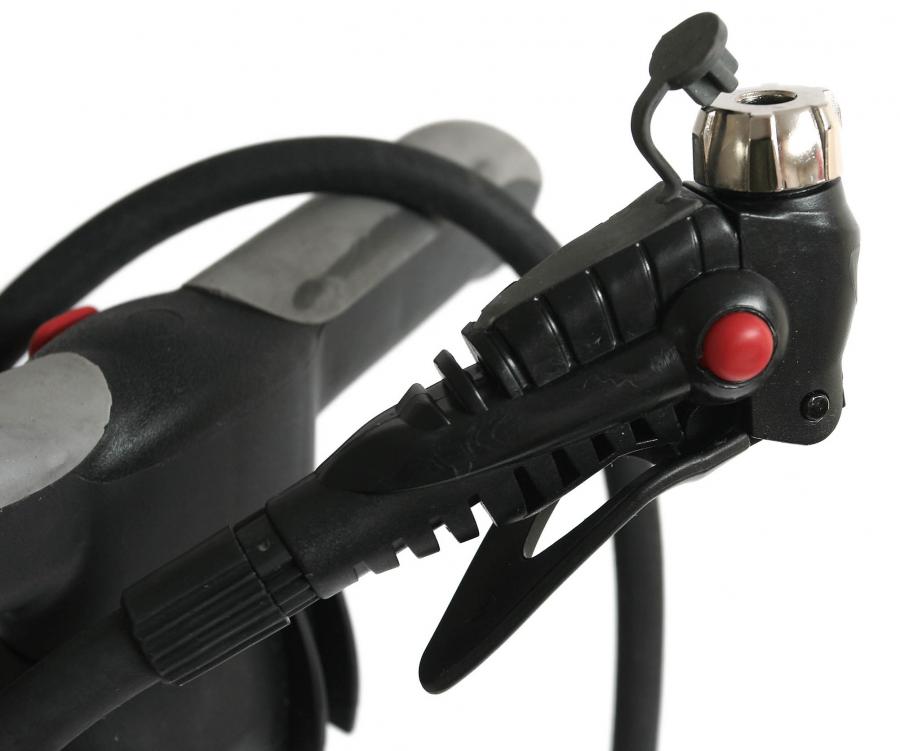
A bleed valve is a handy feature if you want to be very precise with the air pressure in your inner tubes. It allows you to let a little air out without removing the valve head from the valve.
Piston
The piston is the rod underneath the handle that forces air out of the barrel and into your tyres. Some pistons can be flexy meaning that you have to pump carefully to avoid destroying the whole pump. Go for something as sturdy as possible.
Handle
Handles come in a variety of different materials. Choose a handle that’s comfortable to use and, again, go for something sturdy that’ll stand the test of time.
Hose
A long hose – one that stretches the full length of the barrel and back again – can make life slightly easier although it’s unlikely to be a deal breaker.
Tubeless air tank
The growing popularity of tubeless tyres has led to a new pump category, with an extra chamber that provides a big burst of air to get a tubeless tyre seated. You pressurise the tank, and then release all the air into the tyre in one hit, blowing the tyre bead up on to the rim seat.
Weight and portability
The weight of your track pump probably isn’t much of an issue for you because it’s likely to live most, if not all, its life in your house or garage. You might want something relatively small and lightweight if you’re likely to take it with you when you travel to events/races, particularly if you’re flying.
Pressure
Check that the pump is capable of getting your tyres up to the pressure you need. The chances are that it will be, but bear in mind that some tubulars require very high pressures and some manufacturers exaggerate their pumps’ capabilities.
Looks
It used to be that track pumps were purely functional (or ‘boring’, depending on your point of view). Now you can get ones with polished steel or anodised aluminium barrels, wooden handles, and so on. They actually look cool.
Why pay more?
Pretty much every track pump out there will get enough air into your tyres relatively easily, so why not just buy the cheapest you can find and be done with it?
Well, pay extra and you're likely to get something made from better quality materials so it'll probably be more robust and last longer. If you only cycle rarely, that might not be much of an issue, but if you're a year-round cyclist, perhaps with several bikes to keep on the road, a better pump is more of an asset.
Plus, paying for a decent pump with a good head that locks firmly in place on the valve without leaking or working loose is definitely worth having. It makes life that little bit easier.
If you want a pump that's shiny and/or anodized with a wooden handle and a cool-looking gauge, it'll cost you more than a basic plastic pump, but you might not be interested in how the pump looks, especially if it's going to spend its whole life in the shed or garage.
Explore the complete archive of reviews of pumps and on road.cc
About road.cc Buyer's Guides
The aim of road.cc buyer's guides is to give you the most, authoritative, objective and up-to-date buying advice. We continuously update and republish our guides, checking prices, availability and looking for the best deals.
Our guides include links to websites where you can buy the featured products. Like most sites we make a small amount of money if you buy something after clicking on one of those links. We want you to be happy with what you buy, so we only include a product if we think it's one of the best of its kind.
As far as possible that means recommending equipment that we have actually reviewed, but we also include products that are popular, highly-regarded benchmarks in their categories.
Here's some more information on how road.cc makes money.
You can also find further guides on our sister sites off.road.cc and ebiketips.
road.cc buyer's guides are maintained by the road.cc tech team. Email us with comments, corrections or queries.
John has been writing about bikes and cycling for over 30 years since discovering that people were mug enough to pay him for it rather than expecting him to do an honest day's work.
He was heavily involved in the mountain bike boom of the late 1980s as a racer, team manager and race promoter, and that led to writing for Mountain Biking UK magazine shortly after its inception. He got the gig by phoning up the editor and telling him the magazine was rubbish and he could do better. Rather than telling him to get lost, MBUK editor Tym Manley called John’s bluff and the rest is history.
Since then he has worked on MTB Pro magazine and was editor of Maximum Mountain Bike and Australian Mountain Bike magazines, before switching to the web in 2000 to work for CyclingNews.com. Along with road.cc founder Tony Farrelly, John was on the launch team for BikeRadar.com and subsequently became editor in chief of Future Publishing’s group of cycling magazines and websites, including Cycling Plus, MBUK, What Mountain Bike and Procycling.
John has also written for Cyclist magazine, edited the BikeMagic website and was founding editor of TotalWomensCycling.com before handing over to someone far more representative of the site's main audience.
He joined road.cc in 2013. He lives in Cambridge where the lack of hills is more than made up for by the headwinds.
Latest Comments
- Oldfatgit 1 sec ago
This is kinda what happened to me ... but in slow motion....
- Rendel Harris 11 min 23 sec ago
The Battle of Thermopylae (480 BC) was one of the most important battles of the ancient world, where 7,000 Greeks, led by the Spartans under...
- ktache 8 hours 11 min ago
They also do it in orange. I'm after a deep winter jacket after the past week.
- ktache 8 hours 10 min ago
The people at Hexlox have asked me to tell others about their black Friday deals, but I don't quite know what the offer is yet. But saving anything...
- Dnnnnnn 9 hours 7 min ago
I'm unclear how simply considering the views of people who travel through an area is voting for rat-runs. No need to explain though.
- David9694 10 hours 6 min ago
When you don't know for sure what the whinge would be if this work was postponed to January, but you know there would be one:...
- biking59boomer 10 hours 47 min ago
Sadly the cyclist hate in this country seems to have worsened of late. Dangerous motoring combined with anti-cycling officialdom in some places is...
- Cyclo1964 13 hours 18 min ago
Brilliant 🤣


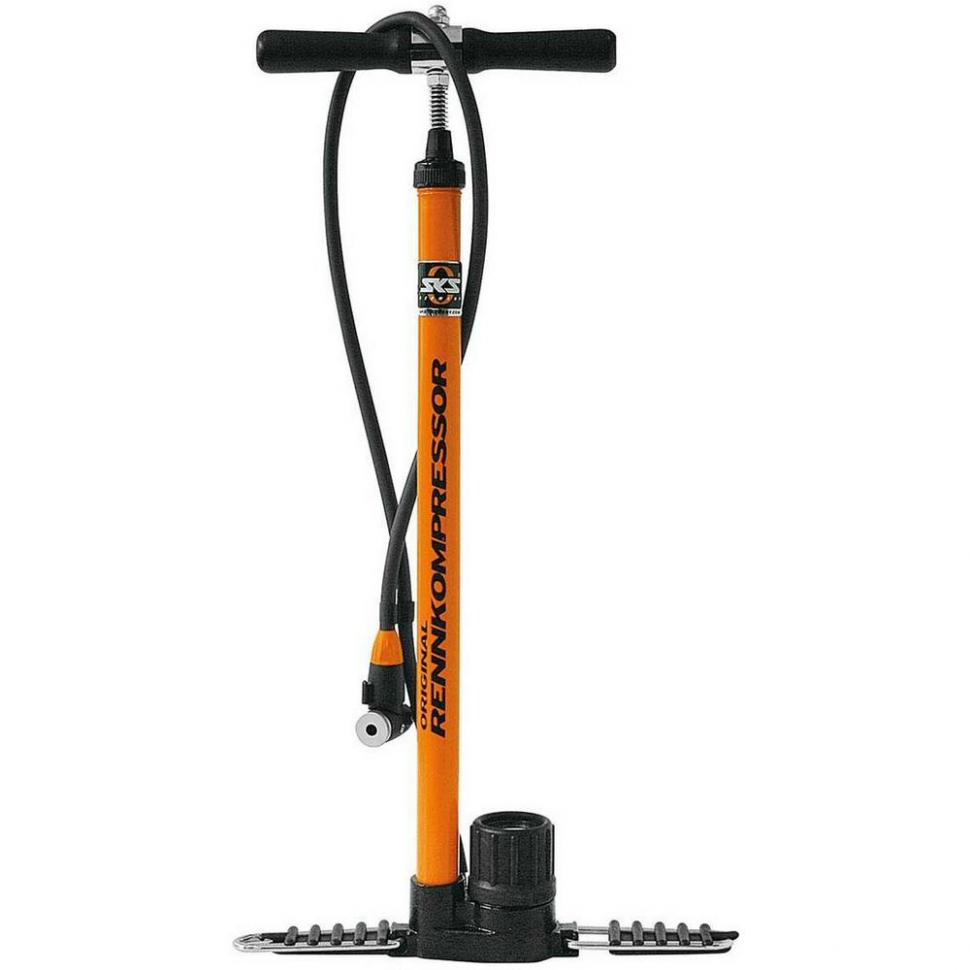

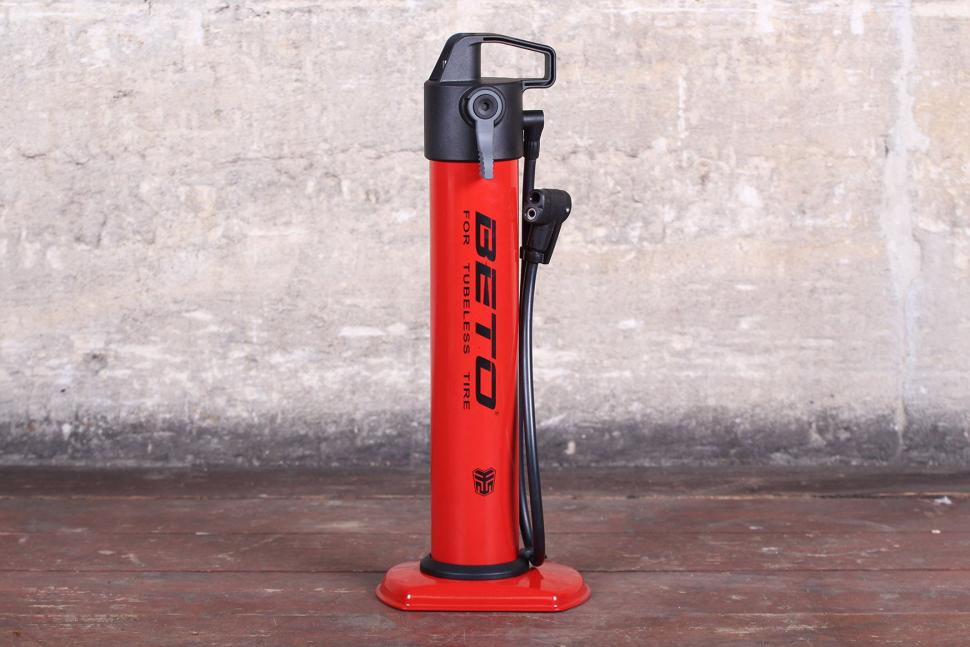

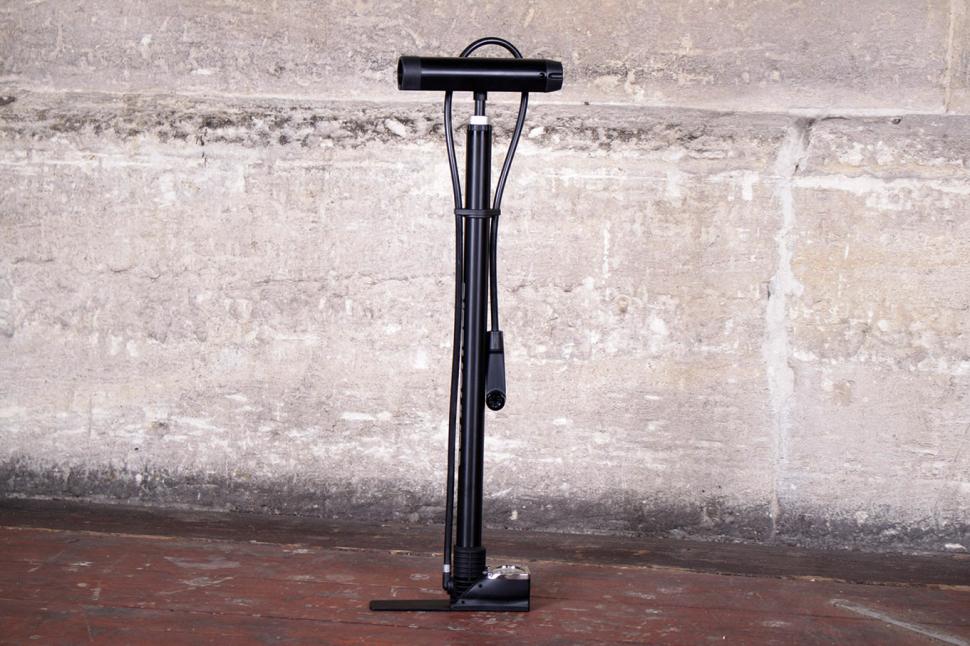
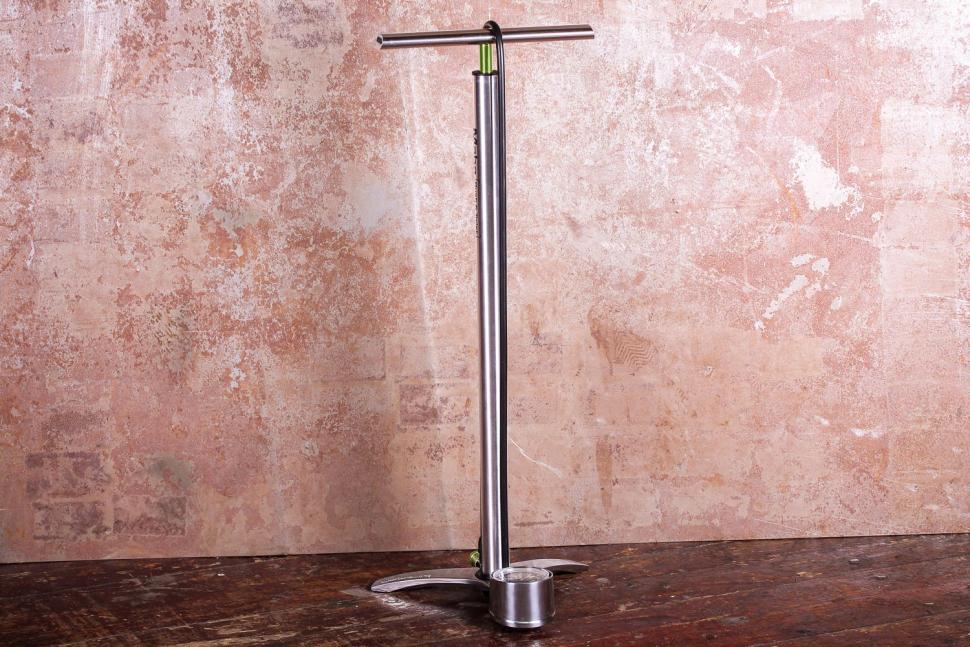

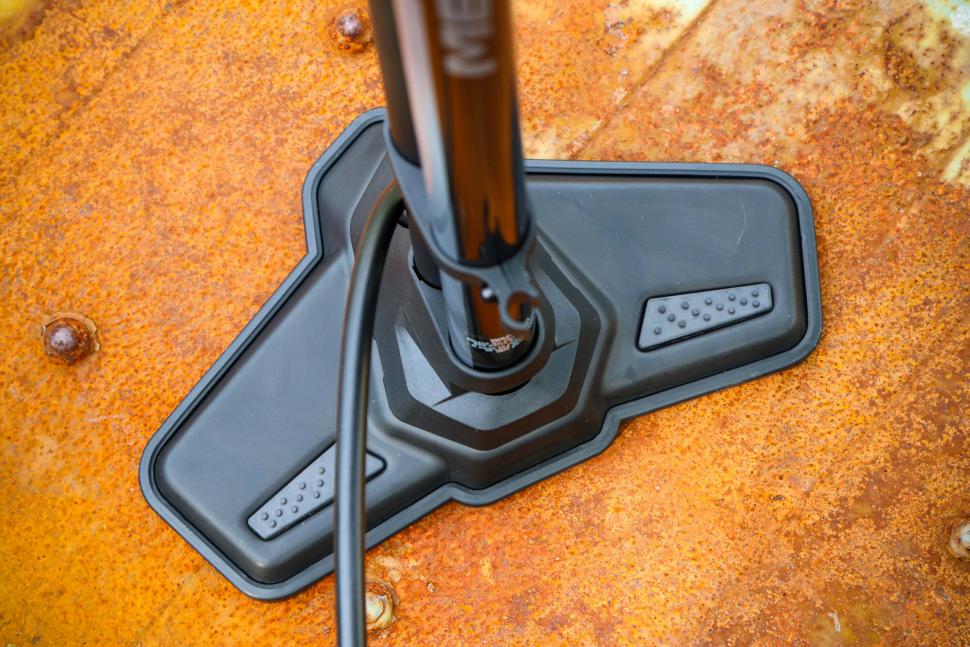

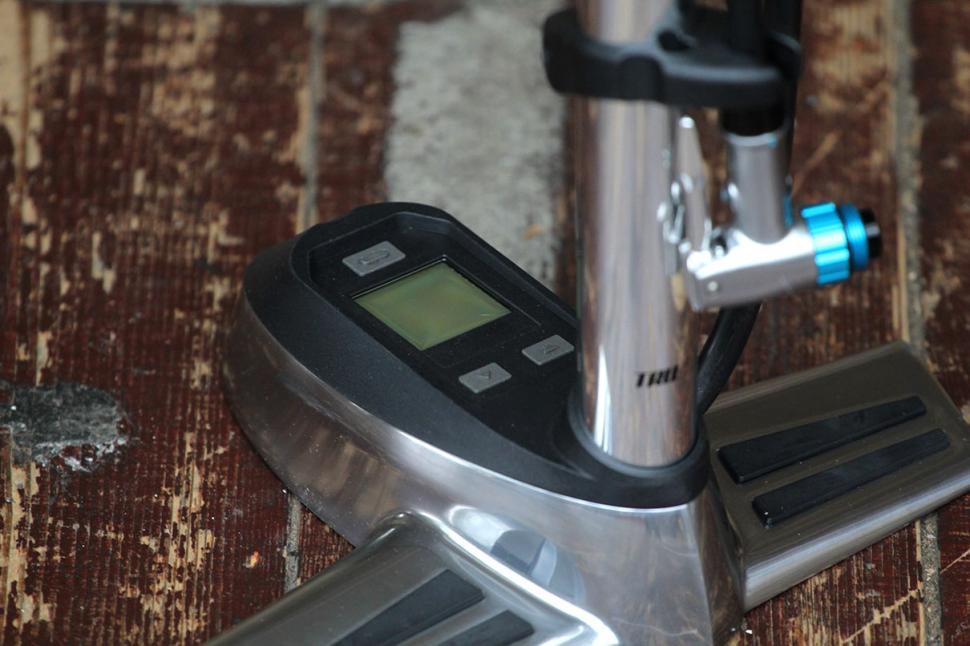
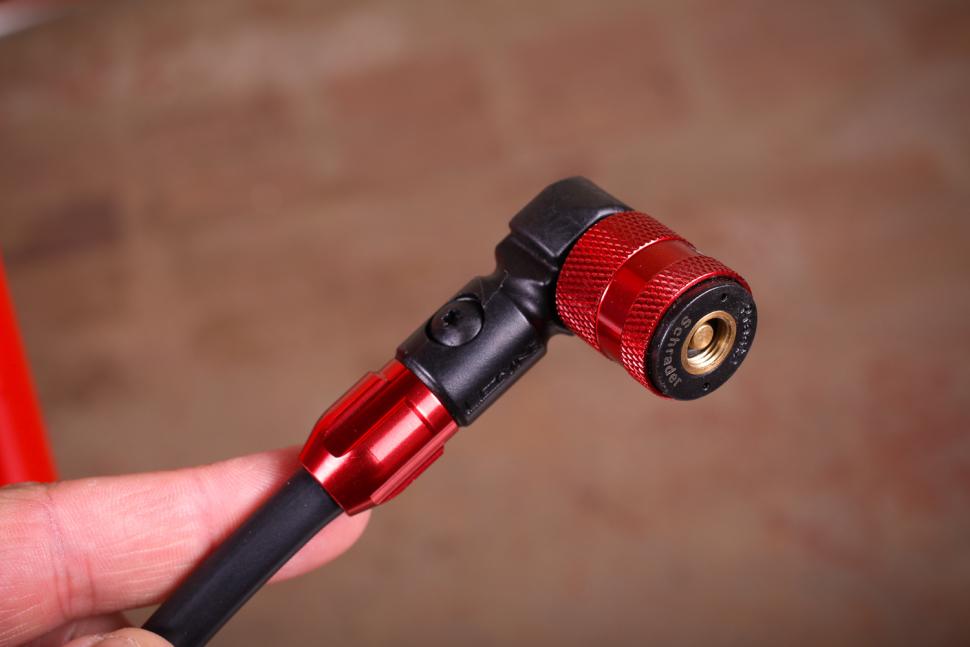
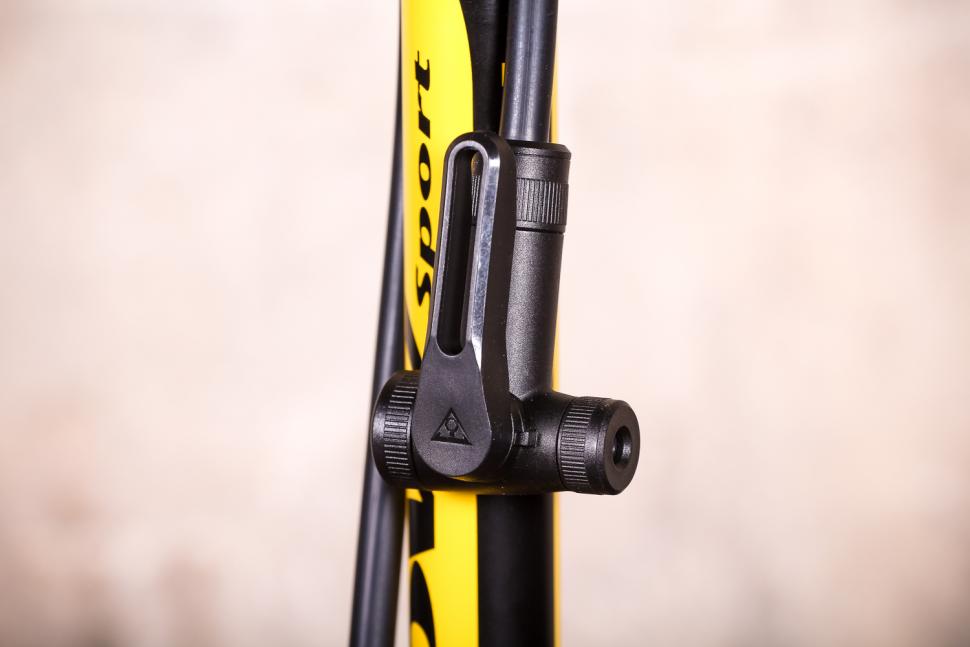

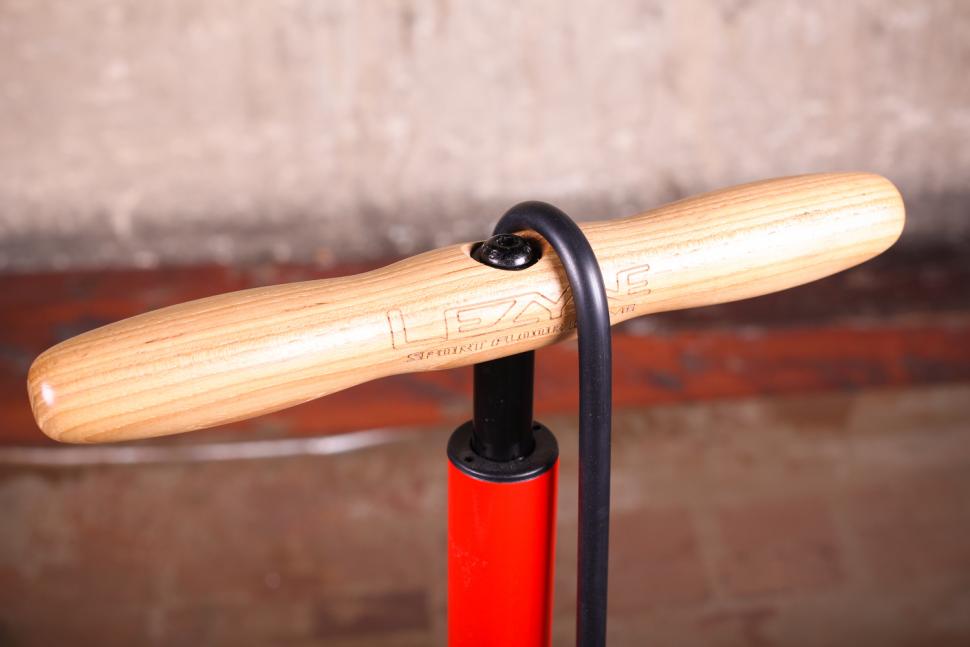
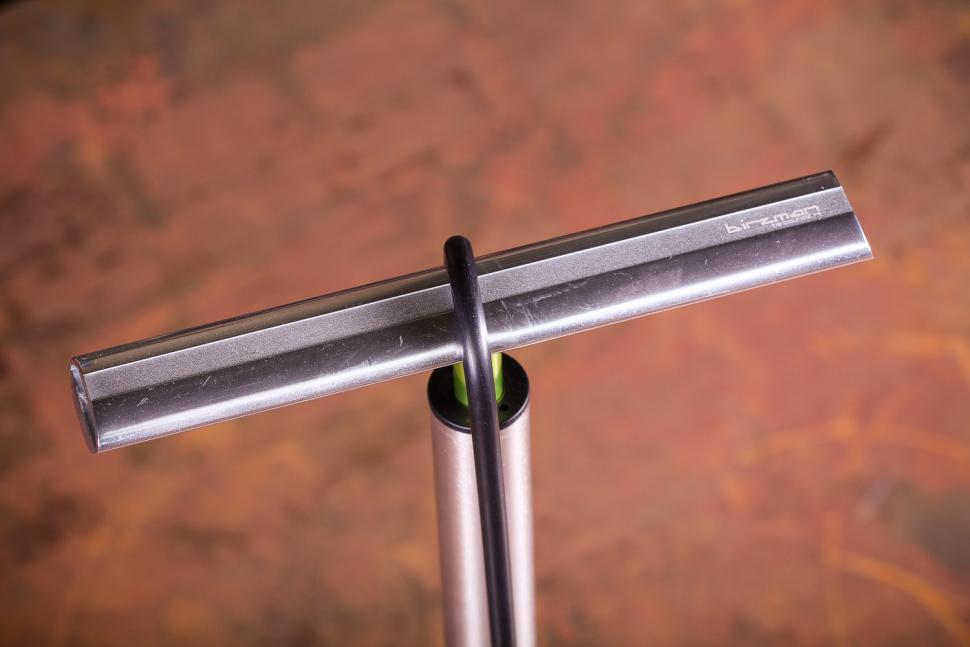
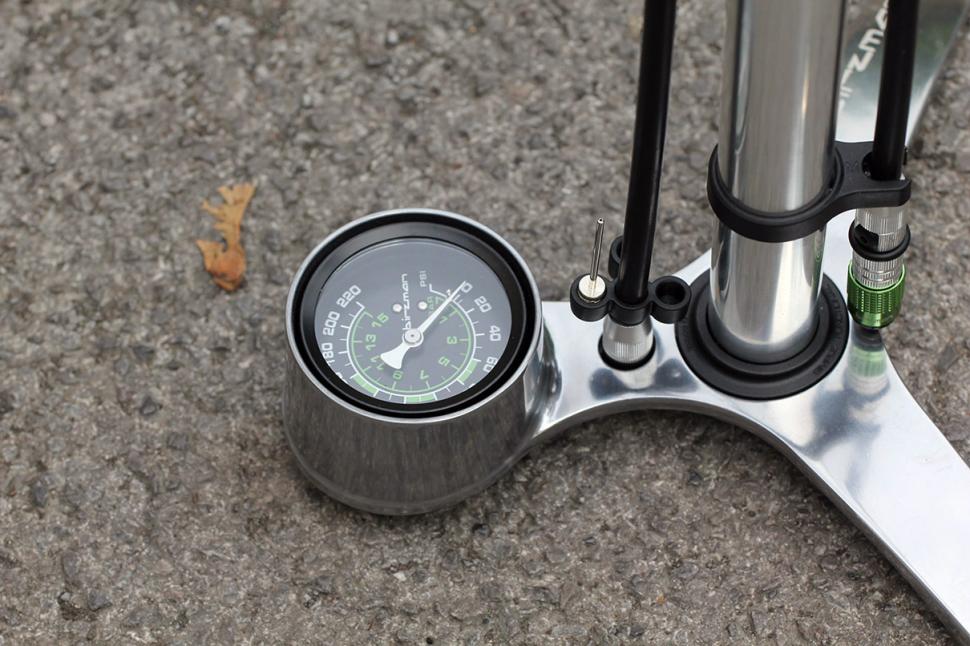
Add new comment
39 comments
Try depressing the valve core with your finger and releasing a quick puff of air from the tube before attaching the pump. Sometimes the valve core is just wedged a bit tight in the valve.
I have a Joe Blow. Not sure if it is this exact model but it is big, yellow and made of metal. I have had it for at least 12 years and use it most weeks. It's just one of those pieces of equipment that sits in the corner of the garage, comes with me to races and events, does its job, has never let me down and pretty much goes unappreciated. If for some reason I lost it and without the benefit of using any other make I would replace it with another Joe Blow without a second thought.
I use it for tubular and clincher. Not sure how well it would work with tubeless. I have no experience of that tyre system.
you have to pump like a madman for 2-3 minutes, good aerobic exercise?
I indeed spent about an hour on and off doing this, trying to get tubeless road to pop without a pressure vessel. I was a seriously sweaty mess in the end, so much so I felt like I had to log it in Strava as it was probably the hardest workout I'd done all week.
New activity type?
Can anyone recommend a decent track pump from actual experience? I recently bought a Topeak Joe Blow Sport 2 and it's absolutely useless. It doesn't press the valve stem down at all so you have to lean on it repeatedly until the pressure goes right off the scale and actually pops opens the valve and you can inflate the tyre.
What? the valve is normally opened by higher pressure outside not be the connector pushing the valve open. Otherwise you'd lose air when you disconnected. Sounds like more of an issue with your valves.
I have a Joe blow 2 works perfectly, except when I forget to unscrew the valve stem. Then I have problems you describe.
I have that issue too, I use a presta to schraeder adapter (then you can get rid of the little lock ring thingy that holds the valve in place)
My one does that too.I think its because i bent the valve trying the wrong side of the adaptor.
Zefal HP , I've had one for about 6 years . Cheap ,solid ,faultless ,I recommend them
Pages